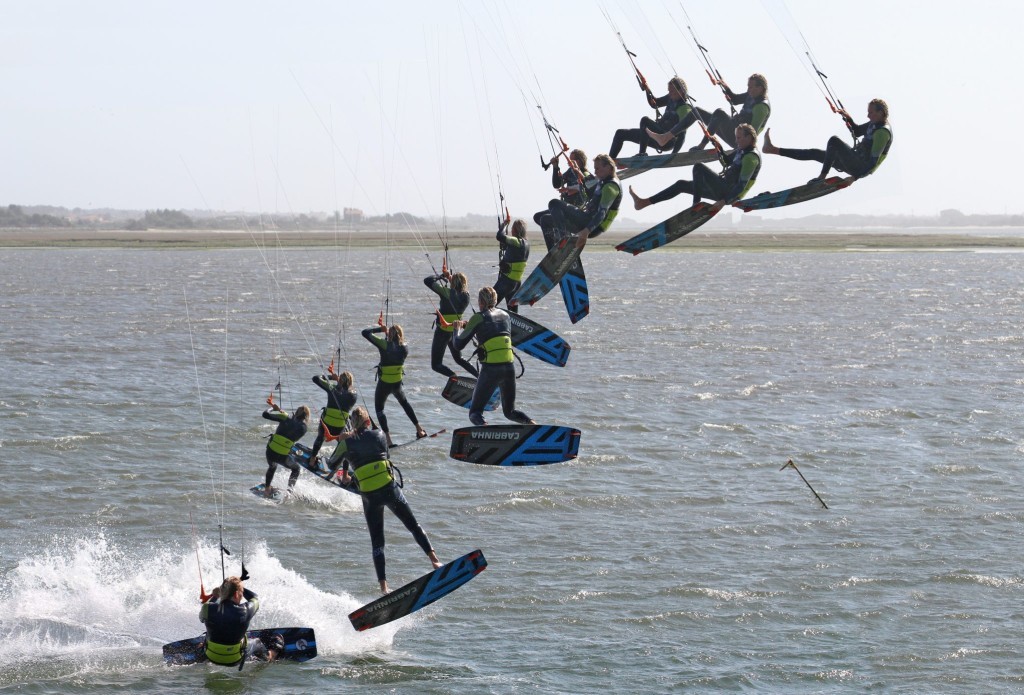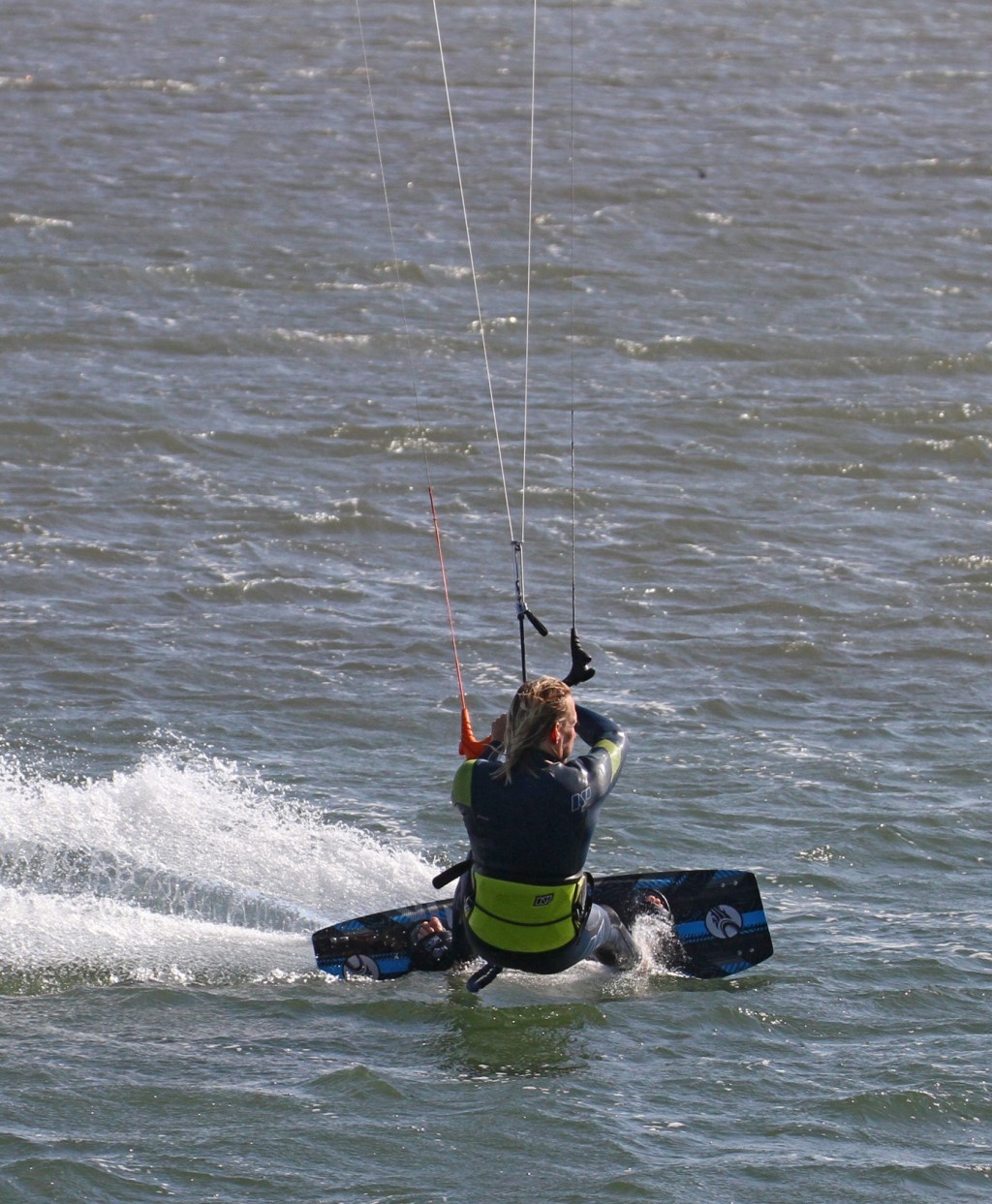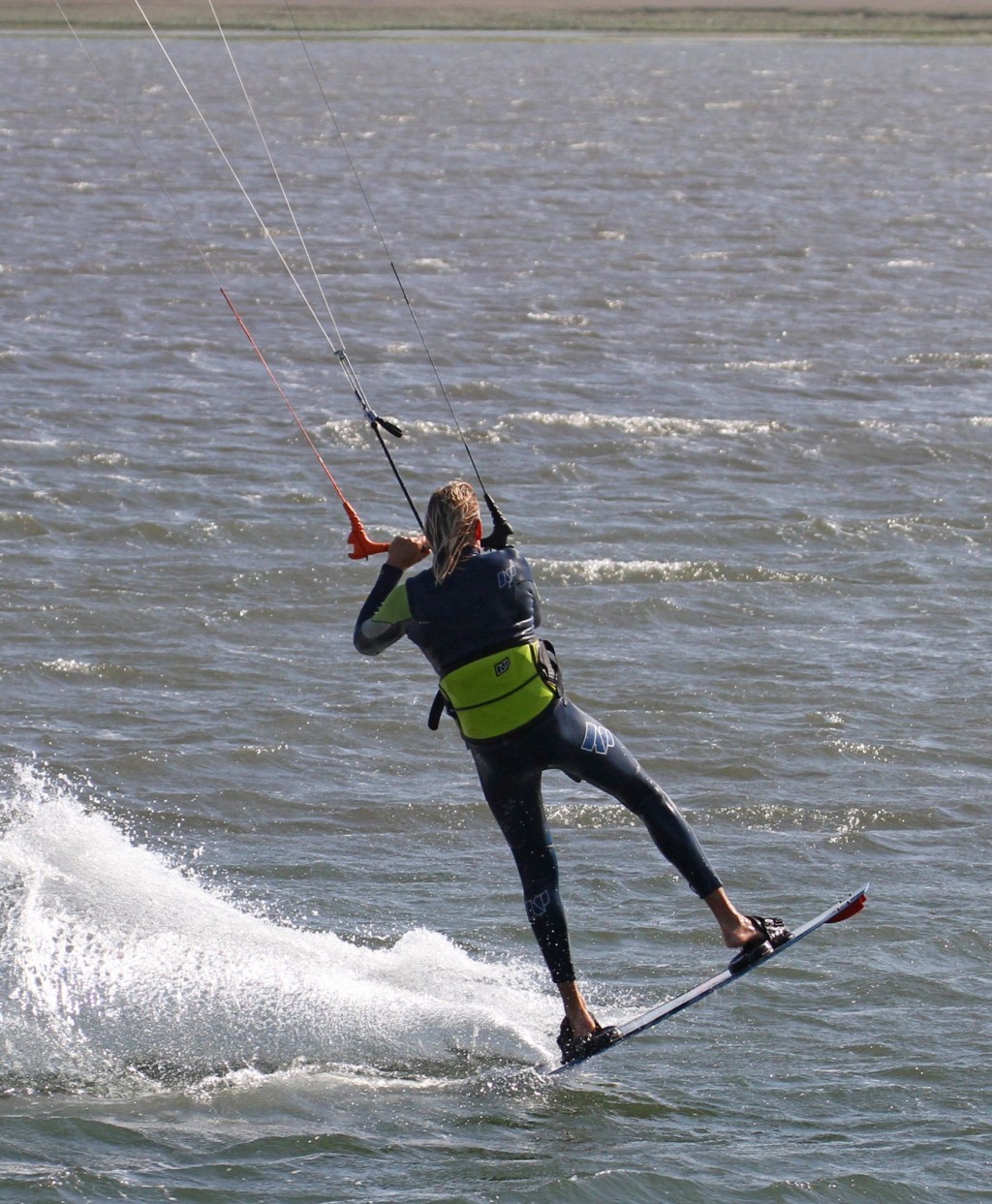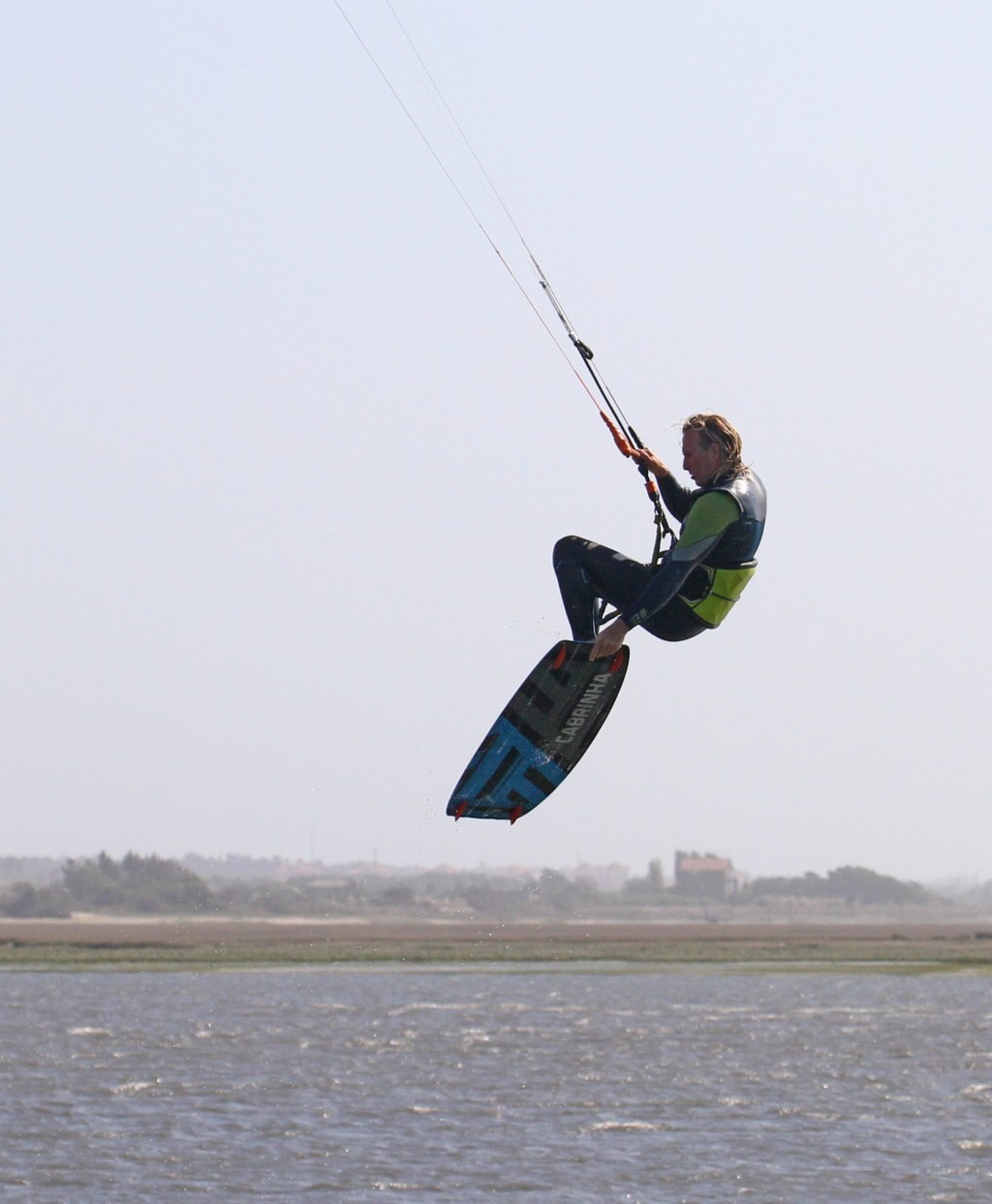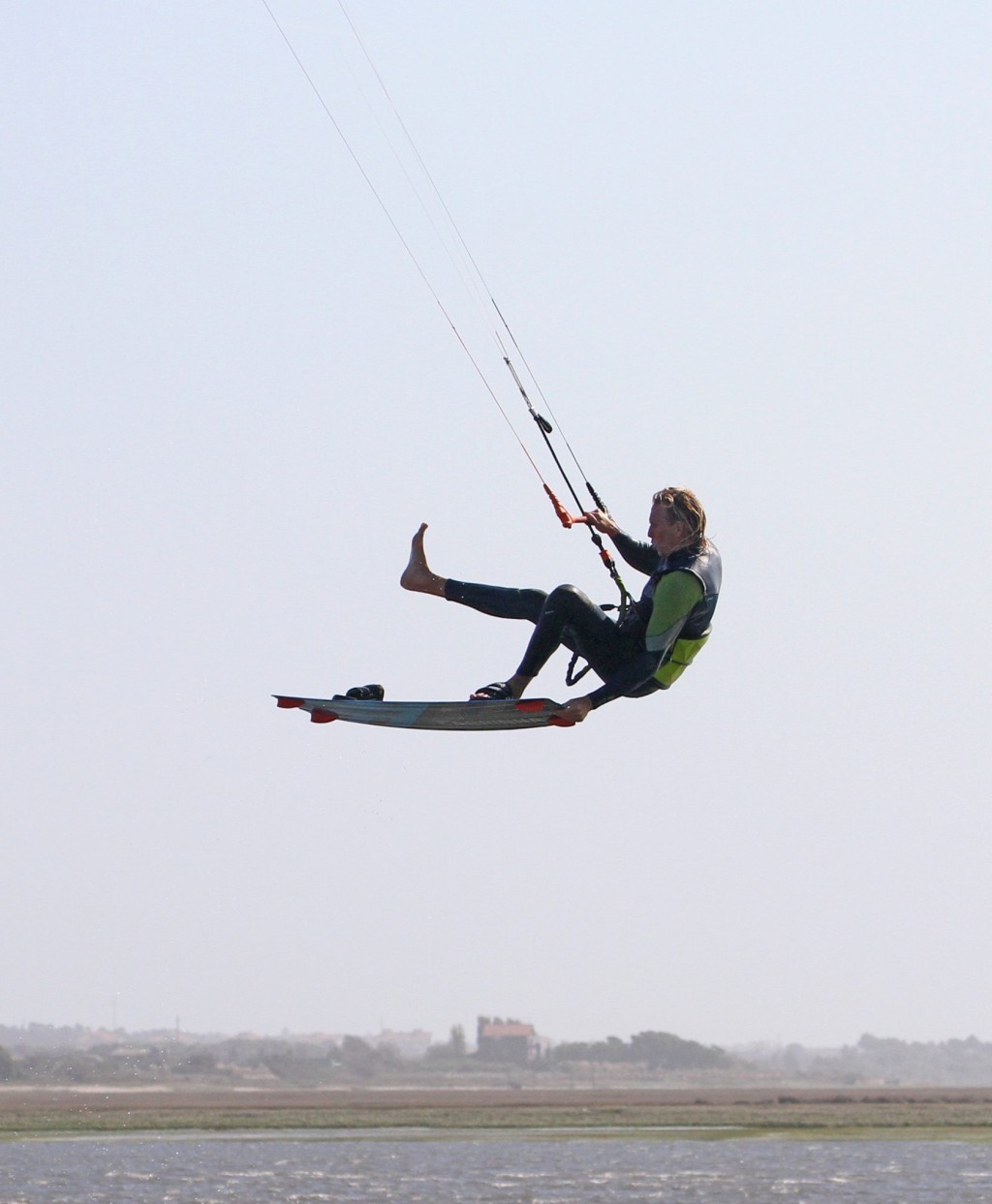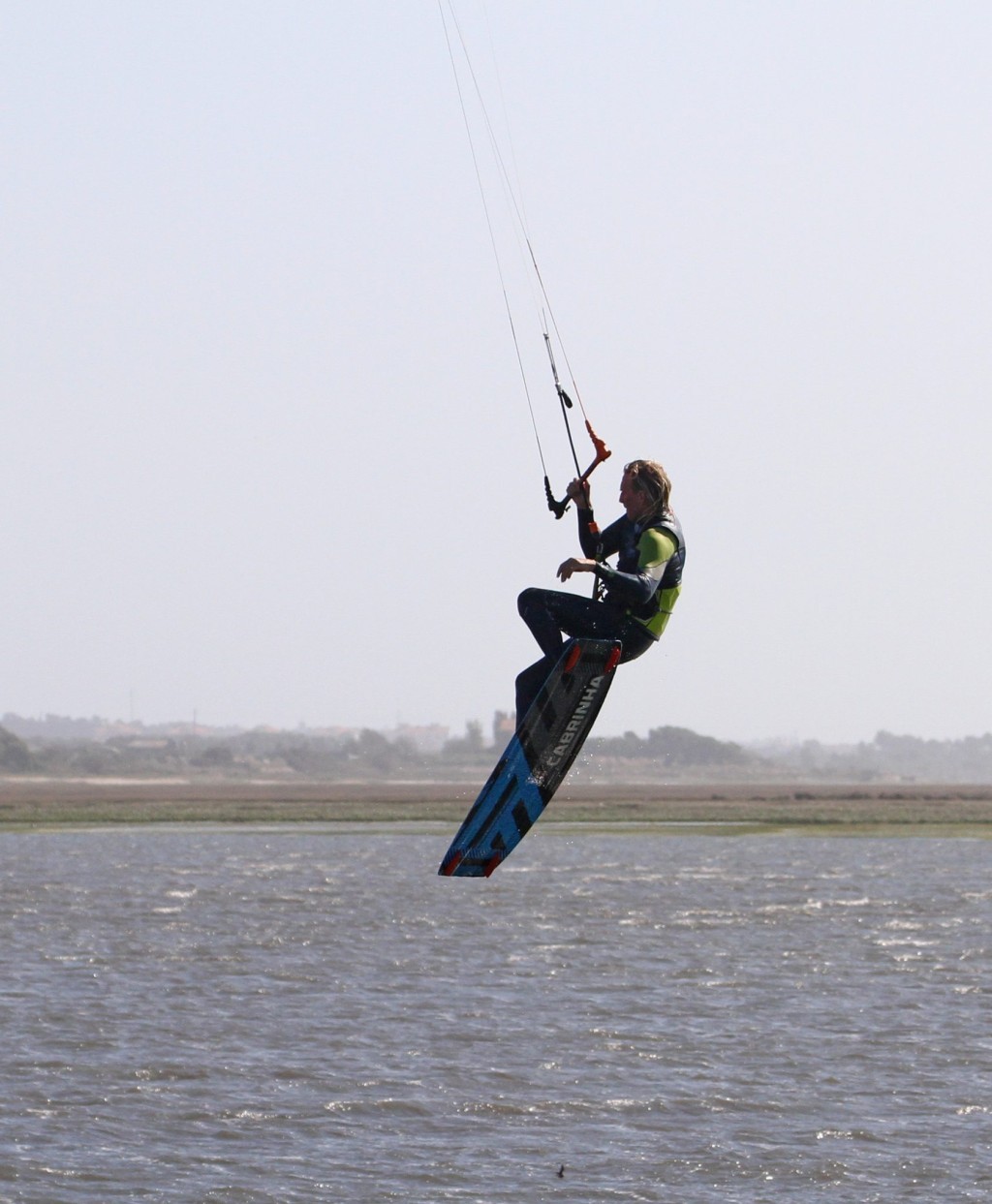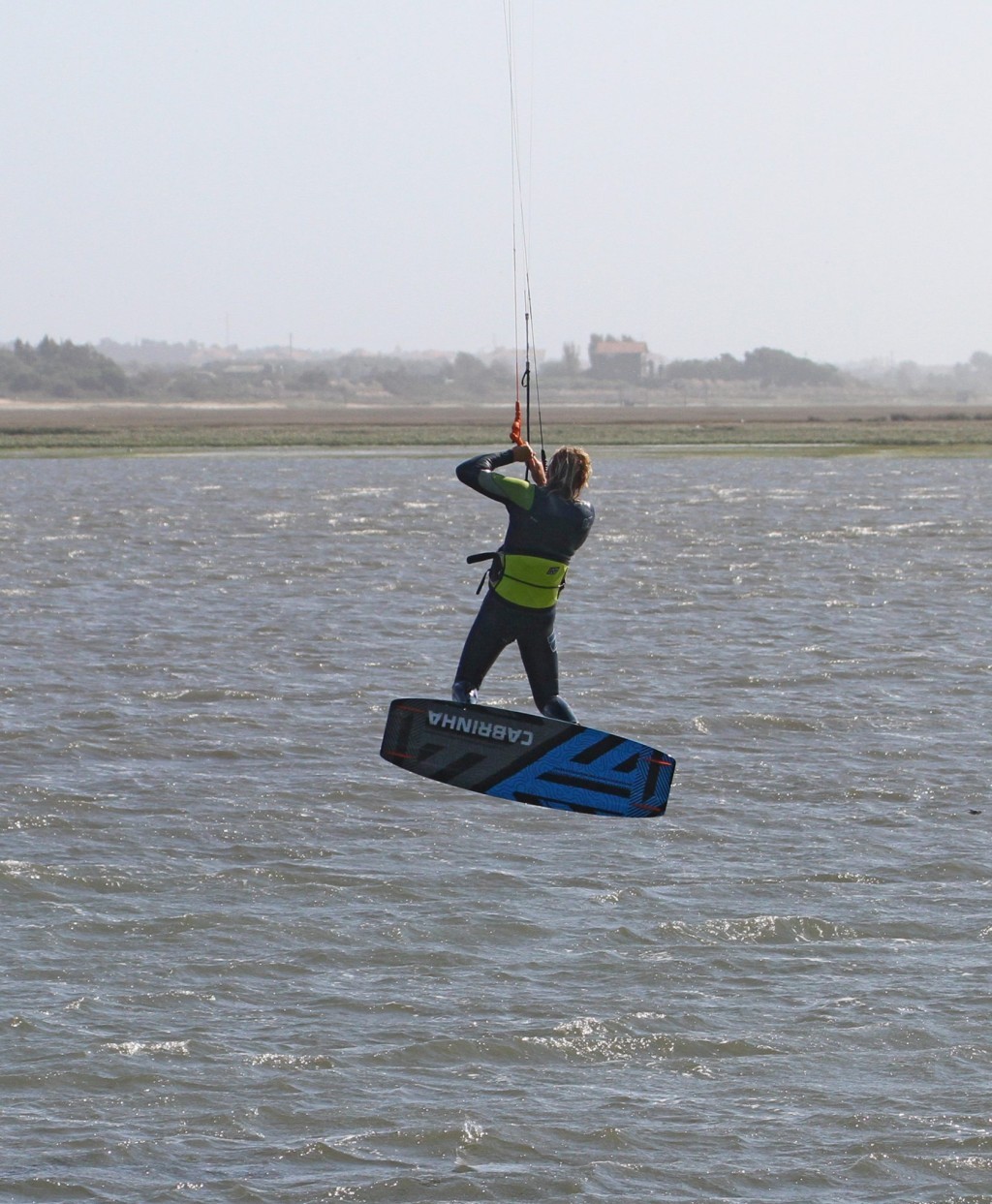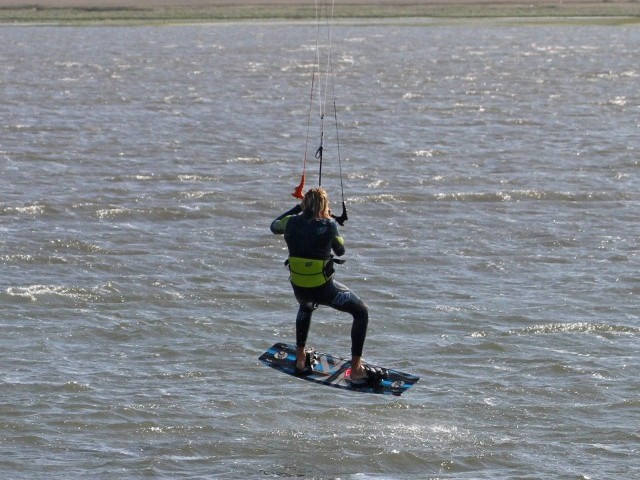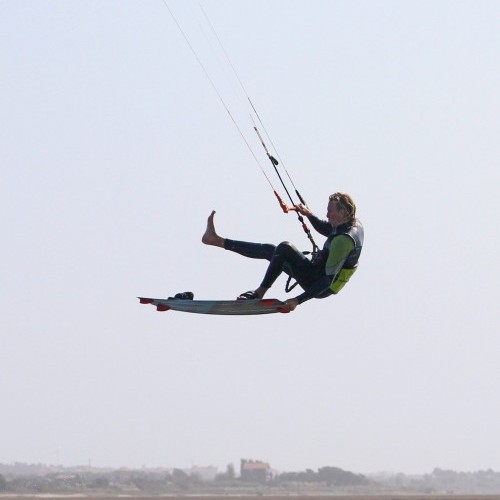
Front Foot One Foot Downloop Transition
Technique / Intermediate
There are many blissful elements to down-looping any sent move. The fact that you can convert whatever trick you give a mighty send to, into a stunning transition is one. You can fancily change direction should the need arise and of course, even though we don’t condone such lavish behaviour, you can perform said move even closer to the beach.
Then there is also the practicality that any move performed with just your front hand on the bar has the possibility to end in tears if you pull a touch too hard, while if you time it right, rather than being a disaster it’s a show stopper. Ignoring all of the above, and seeing how this is a technique section there is really no justification necessary – the front foot one-foot down-loop transition, let’s nail this.
The Preface Pic A.
We already touched upon the point that by layering a down-loop transition onto something you can still give that something the beans and go for some height. Height is relative to both ability and conditions, and when you’re learning something, it’s not a bad idea to tone it down a tad. That said you’ll still need time to free the front foot, and you need to control the kite so we’ll still give it a decent send.
No need to worry too much about your approach, your comfy technique will be the best initiation into this - suffice to say that you need a decent edge, some speed, an upwind path and your kite no higher than 11 or 1, so that you can edge and it has time to generate lift once you send it.
You can see that Christian has a solid edge so that he can resist against the kite as he sends. He’s given the kite a good send by push-pulling the bar, which means the kite will move quickly, which equals height and it will go back past 12, which will give him balance and control when he only has his front hand on the bar as the kite will be behind 12 o’clock.
Take Off Pic B.
This should be a pretty comfortable part of the move. Your preceding edge and send will see to that. Not enough edge or too much send will ping you off the water, and you won’t have the balance, control or confidence to chance into the unknown. Also seeing as how you have given the kite a decent send for height and time, you will need to stop it going any further.
In the pic, Christian is lifting off nice and controlled. He’s been extended by the kite, but he hasn’t been pulled forwards, the result equals more up. Note how he has levelled the bar on take off. This will stop the kite moving further back and will also slowly redirect the kite as he lifts, which will, in turn, give him more height.
Finally, it's worth noting that Christian’s front foot is lifting. This is because he has loosened it in the strap before the jump. You can wiggle it out of the strap a bit or loosen the strap, or both. By freeing the foot it’ll come out much more easily, so do this as you approach.
Grab & Drop Pic C.
The earlier you can get your foot out, the more time you will have for the rest. You don’t want to be frantically scratching to get your front foot back into the strap once you’ve committed to the down-loop! Which means that you need to get the grab in pronto, so as soon as you can lift the back knee to bring the board close to you.
To help with the liberation of your front foot, we’d recommend grabbing the board on the actual tail, not on the heelside edge. If you look at the photo, you can see why. When Christian lifts the board and grabs it by the tail, it does two things. Firstly it twists the board further downwind, and secondly, it lifts the tail higher. Both of these movements help push the nose of the board away from you and down. This aids in dropping the board away and off your front foot, especially if you’ve already loosened it.
Heel Boy Pic D.
And once it’s out why not wiggle it around? The money shot, lift your leg and make it count. That said you still need to be thinking about the kite. By having the bar in the kite will have naturally been drifting forwards while you’ve been concentrating on airing your toes. As it moves, it’ll generate a bit of lift and potentially give you a tad more height, but will definitely give you a little bit more hang time.
As it passes 12 o’clock, you do need to be aware of where it is. With a down-loop in the post, you can creep it forwards around the window, but you don’t want it diving down yet. You can see that Christian is waving his foot around in the sun, his bar is in, but he’s kept it pretty level to keep the kite high and maximise float.
Stage 2 Pic E.
Once you’ve blown the sand off your foot and you feel the kite start to lower you it’s time to get the foot back in and prepare for the down-loop. Foot wise, make sure you look at the front strap, then it’s pretty simple to guide your foot in and push it so that you get some grip from the strap, before you release your grab. Once the grab is gone, it’s not so easy to get your foot wedged again.
As soon as the foots in you should be steering the kite down a bit more positively. The idea is to get it into the window and away from the edge. This will give you a bit of pull and downwind speed which sets you up perfectly for the next stage.
Progressive Pull Pic F.
With the kite moving into the window and you moving forwards you will feel your feet and board getting left behind. No problem, remember that as you will be transitioning, you will be landing other foot forward. In this case Christian will be landing left foot forwards, having jumped left to right.
As you start to descend pull more aggressively on your front hand, to encourage the kite to move quicker still and start the down-loop. You don’t have to give it everything as you would for a kiteloop because you’re already going forward with it.
Looking at Christian you can see that the bar is steering the kite down and around and he’s keeping his back leg bent and up, so that he can pull it forward for the landing, while his front leg can hang as it will be his back leg, eventually dropping for a tail first landing.
Et Voila Pic E.
When the kite comes through it will pull gently, so go with it while pointing your board downwind and slightly back in the other direction. Depending on where the kite is you may need to pull and push harder to get it around, or you may need to let off slightly so that it keeps pulling. Here Christian has down-looped the kite fully before landing (the intended move), so he is steering the kite forwards so that it keeps pulling him in the new direction rather than just dropping him down as it goes back up.
Top Tips
Build up to this with a few grabbed down-loop transitions before freeing your foot. This way you can concentrate on, and get a feel for the timings of each relevant part before distracting yourself with the showy bit.
Although the idea is that you can go big, guns blazing etc. you can still work up to the fireworks – the first ones don’t have to be mega. The best way to work up to a bona fide down-loop tagged onto any move is to loop late. You can dive the kite hard, just before you land and then bring it under and though once you’ve landed. This will work as long as you land downwind in the new direction and the kite hasn’t moved too far down before you give it some welly. Straight downwind and you won’t have enough tension to stop the kite hitting the drink.
Now you better acquaint yourself with this move through the sequence and videos.
Common Problems
Assuming that you can already down-loop out of a transition and front foot one foot any issues should be more to do with acclimatising to the move rather than having genuine problems. Therefore, if you are struggling with either the one foot or the down-loop transition, work on getting them nailed as individual moves first.
Other than that your main problem will be kite positioning while trying to get the front foot back in. If it’s out too long your kite will drift forwards, and you’ll come in hot with the kite low so that down-looping won’t be an option. So get the foot out and back in early so you can concentrate on the descent and down-loop.
Keystones
- Wiggle front foot loose, good edge and enough send for height and time
- Bring back leg up early and grab actual tail of board
- Let the board drop off your front foot as you pull tail in and up
- Keep the bar in and kite above you as replace foot.
- Progressively pull harder to initiate down-loop, while landing downwind in other direction
This technique article was in Issue 65 of IKSURFMAG.
Related
By Christian and Karine
Christian and Karine have been working together as a coaching team, running improver to advanced kitesurfing clinics since 2003.






